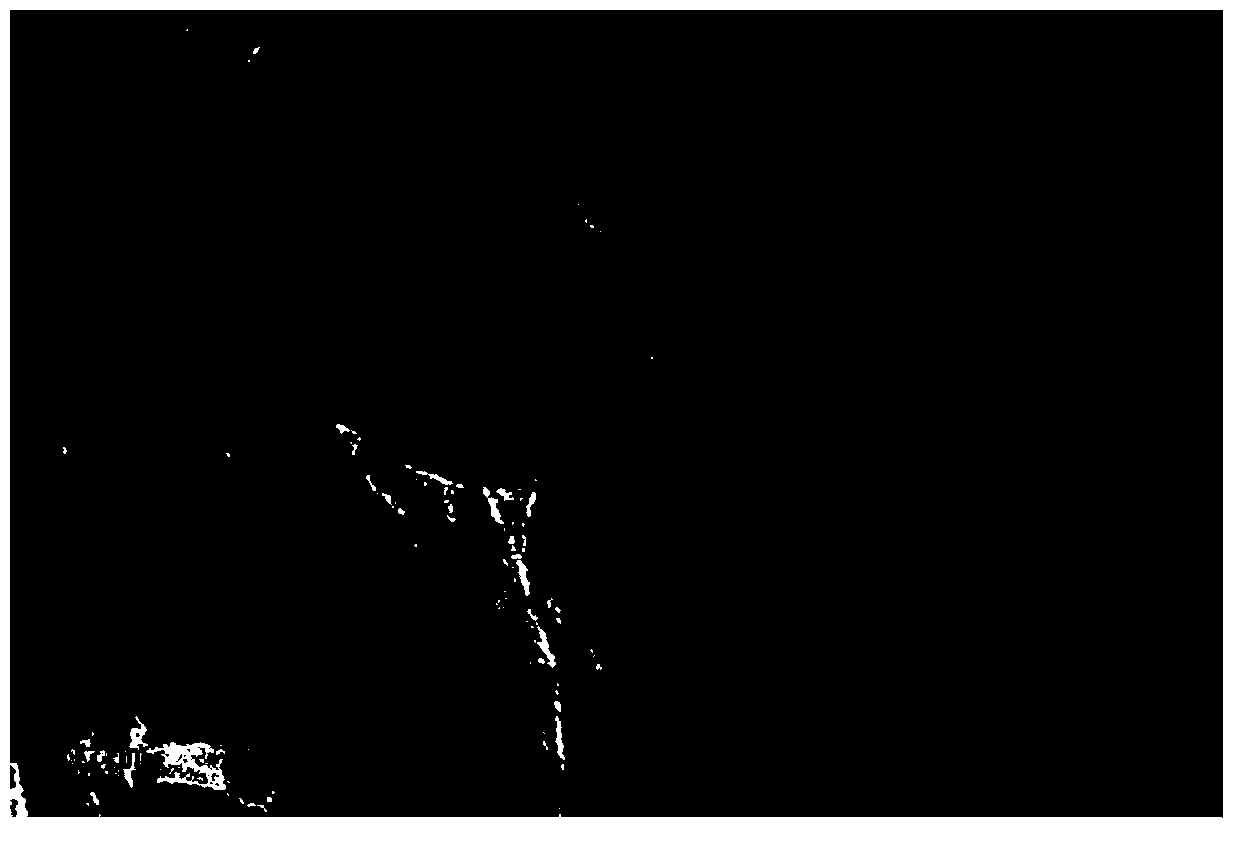Anode material of lithium-sulfur battery and preparation method thereof
A positive electrode material, lithium-sulfur battery technology, applied in the direction of battery electrodes, nanotechnology for materials and surface science, circuits, etc., can solve the problems of limited ability to adsorb active substance sulfur, poor conductivity, etc., to achieve inhibition of dissolution, high Utilization rate, the effect of reducing charge and discharge polarization
- Summary
- Abstract
- Description
- Claims
- Application Information
AI Technical Summary
Problems solved by technology
Method used
Image
Examples
Embodiment 1
[0030] 1.046g Zn(NO 3 ) 2 ·4H 2 O and 0.432g of terephenyl terephthalic acid were added to 30mL of organic solvent dimethylformamide (DMF), and a certain amount of surfactant polyethylene glycol (PEG) was added to it. ) is 1% of the weight of the precursor solution, and a certain amount of multi-walled carbon nanotubes are added to it, and the weight ratio of multi-walled carbon nanotubes to the multi-walled carbon nanotube-embedded mesoporous metal-organic framework composite material is 5%. The reaction precursor solution was isolated from air and ultrasonically treated for 0.5h. After the precursor solution was mixed uniformly, the precursor solution was transferred to a polytetrafluoroethylene-lined reaction kettle by solvothermal method; Heated to 155°C and kept for 48h; after the solution was cooled to room temperature, the crystals were washed with dimethylformamide (DMF), centrifuged, filtered and dried to prepare multi-walled carbon nanotubes inlaid with mesoporous...
Embodiment 2
[0034] 1.668g Zn(NO 3 ) 2 ·6H 2 O and 0.222g of terephthalic acid are added to 30mL of organic solvent dimethylformamide (DMF), and a certain amount of surfactant polyethylene glycol (PEG) is added to it, and the surfactant polyethylene glycol (PEG) The amount of adding accounted for 2% by weight of the precursor solution, adding a certain amount of multi-walled carbon nanotubes to it, the amount of added multi-walled carbon nanotubes accounted for the weight of the multi-walled carbon nanotubes inlaid mesoporous metal organic framework composite material The ratio is 5%. The reaction precursor solution was isolated from the air and ultrasonically treated for 0.5h. After the precursor solution was mixed evenly, the precursor solution was transferred to a polytetrafluoroethylene-lined reactor by solvothermal method; the solution was transferred from Heating at room temperature to 110°C and keeping it for 24 hours; after the solution was cooled to room temperature, the crysta...
Embodiment 3
[0036] 1.046g Zn(NO 3 ) 2 4H 2 O and 0.432g terphenyl terephthalic acid are added to 30mL organic solvent dimethylformamide (DMF), and a certain amount of surfactant polyethylene glycol (PEG) is added thereto, and the surfactant polyethylene glycol (PEG ) accounted for 1% by weight of the precursor solution, and a certain amount of multi-walled carbon nanotubes was added to it, and the amount of multi-walled carbon nanotubes accounted for 1% of the multi-walled carbon nanotube-embedded mesoporous metal-organic framework composite. 30% by weight. The reaction precursor solution was isolated from the air and ultrasonically treated for 0.5h. After the precursor solution was mixed evenly, the precursor solution was transferred to a polytetrafluoroethylene-lined reactor by solvothermal method; the solution was transferred from Heating at room temperature to 155°C and keeping it for 48 hours; after the solution was cooled to room temperature, the crystals were washed with dimethy...
PUM
| Property | Measurement | Unit |
|---|---|---|
| Diameter | aaaaa | aaaaa |
| Specific surface area | aaaaa | aaaaa |
| Mesopore diameter | aaaaa | aaaaa |
Abstract
Description
Claims
Application Information
 Login to view more
Login to view more - R&D Engineer
- R&D Manager
- IP Professional
- Industry Leading Data Capabilities
- Powerful AI technology
- Patent DNA Extraction
Browse by: Latest US Patents, China's latest patents, Technical Efficacy Thesaurus, Application Domain, Technology Topic.
© 2024 PatSnap. All rights reserved.Legal|Privacy policy|Modern Slavery Act Transparency Statement|Sitemap



